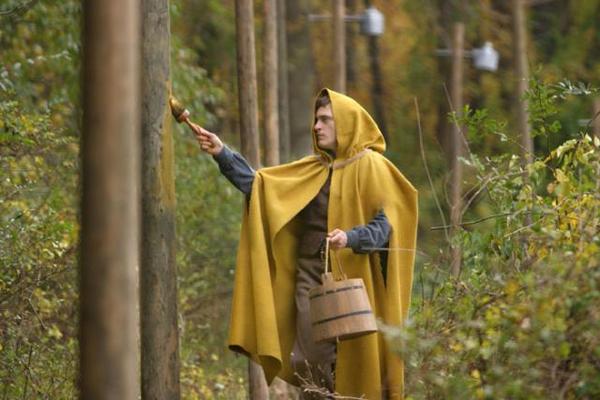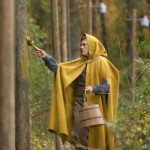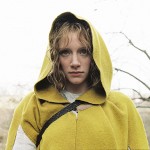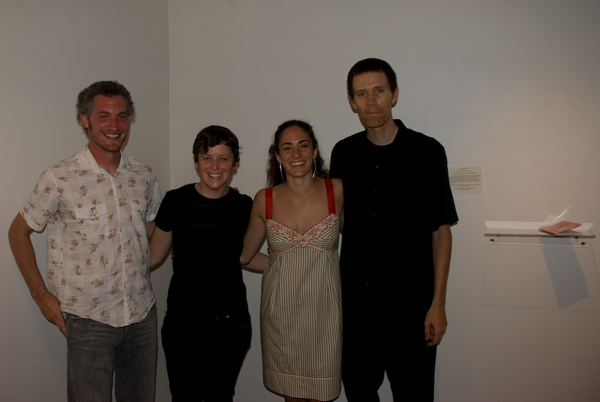As a blind horror fan, I am fascinated with horror movies featuring blind female protagonists. Though a small category, there are enough examples to count as a subgenre, most notably: Wait Until Dark (1967), See No Evil (1971), Jennifer8 (1992), the Hong Kong film Jian Gui (The Eye, 2002), and its American remake The Eye (2008).
As a media scholar and disability advocate, my fascination with these films often seems a guilty pleasure. Unlike films which frame blind men as active heroes in their own stories, such as Zatoichi (1962-present), or Daredevil (2003), most films featuring blind females frame their protagonists as passive victims, with a male lead doing most of the rescuing.
There are, however, rare films which I enjoy for their portrayals of blind females as final girls (Carol J. Clover's term for female heroines who actively fight to save themselves and others). My favorite of these is M. Night Shyamalan's The Village (2004), for the vividly realized characterization of its final girl, and because The Village works as both a dark fairy tale and a horror film.
Ivy Walker, the final girl in The Village (Bryce Dallas Howard), is tough, independent, and smart. She has an offbeat sense of humor and she plays a vital role in her community as caregiver and storyteller. If there is any stereotyping in Ivy's characterization, it is that she can sometimes see a person's "color" (the trope of blind women with psychic powers is common enough that, if there is a blind woman in a film, I start waiting for the psychic powers to manifest). Within the larger context of the story of The Village, however, colors take on great significance and, along with an exceptional sound design, are used to create a fairy-tale atmosphere which is alternately magical and unsettling.
We are given further insight into Ivy's personality when, during a conversation with Lucius, the young man she loves, Ivy admits to wishing she could test her courage and take risks as he does. As often happens in fairy tales, Ivy will, much to her sorrow, get her wish, for she will have to confront the bogeyman in order to save Lucius's life.
The bogeyman of The Village starts out as an unknown being which leaves the mutilated bodies of small animals around the village. Originally, the villagers suspect a mad animal, a coyote or wolf (providing one of the film's many references to the fairy tale of Little Red Riding Hood). However, the children and later some of the adults come to believe that the dead animals are signs left by the monsters who live in the woods beyond the boundary of their village. These monsters are, like other bogeyman legends, mostly described in terms of being a taboo subject (they are referred to as "Those We Don't Speak Of"); mostly they are perceived as moans and growls from the forest, and when they finally invade the village, they are only caught in partial glimpses of red cloaks, snouts and savage claws.
When Ivy becomes betrothed to Lucius, it upsets Noah Percy, a mentally-disabled young man who has harbored feelings for Ivy. Noah stabs Lucius and leaves him for dead. When Ivy embarks on a quest through the forbidden woods to find medicine to cure Lucius, she is stalked by a monster in a red cloak. She lures it into springing at her, knowing the monster will fall into a deep pit, where, dying, the monster is revealed to be Noah. When Ivy returns to the village with the medicine, her father, the town's leader, assures Noah's parents that they can tell the villagers that Noah was killed by one of the monsters, and Noah will thereby make their story of monsters in the woods true, for the legends of the monsters in the woods have been concocted by the elders in order to ensure that the inhabitants of the village will not venture beyond its boundaries, and thus will live in ignorance (innocence?) of the violence of modern society.
The characterization of Noah is one of the aspects to The Village which I have always felt conflicted about for, if Ivy is portrayed as talkative, clever, and courageous, Noah Percy is portrayed as a mentally-disabled man who has the mind of a child but who is also sexually dangerous and violently out of control. It is not clear that Noah understands the consequences of what he does, for he is never given a voice to express himself except to echo what others say. This kind of portrayal of mentally-disabled men as violent, out of control and sexually dangerous has been a stereotype used in many other films, most notably Of Mice and Men (1939), in which the mentally-disabled Lenny is played by Lon Chaney Jr., a character actor known for his roles as monsters and psychotic killers.
However, there is an alternate reading of the relationship between Ivy and Noah which problematizes the reading of Noah as a stereotype. It is revealed during the story that Ivy's blindness might have been prevented by modern medicine, and her father realized that if he and the other villagers had not intentionally isolated themselves, Ivy might not have become blind. Likewise, there is the idea that Noah's disability might have been improved by medicine. Additionally, Noah's violence finds its weapons in the secrets the villagers keep, and thus he represents the dark side of the village itself. The interesting point this reading brings to the film is that as long as a society uses the fear of monstrous others to control its members, it runs the risk of creating real monsters. While the film gives a happy ending to Ivy and Lucius's story, it can be surmised that, in the classic Michael Myers ending, another bogeyman could spring up just when the villagers forget the past and feel lulled into a sense of safety.
- Two views of M. Night Shyamalan’s The Village
Read the review Tom Ridge's The Village in the first Summer Movie Extravaganza.
All images found via Google.






